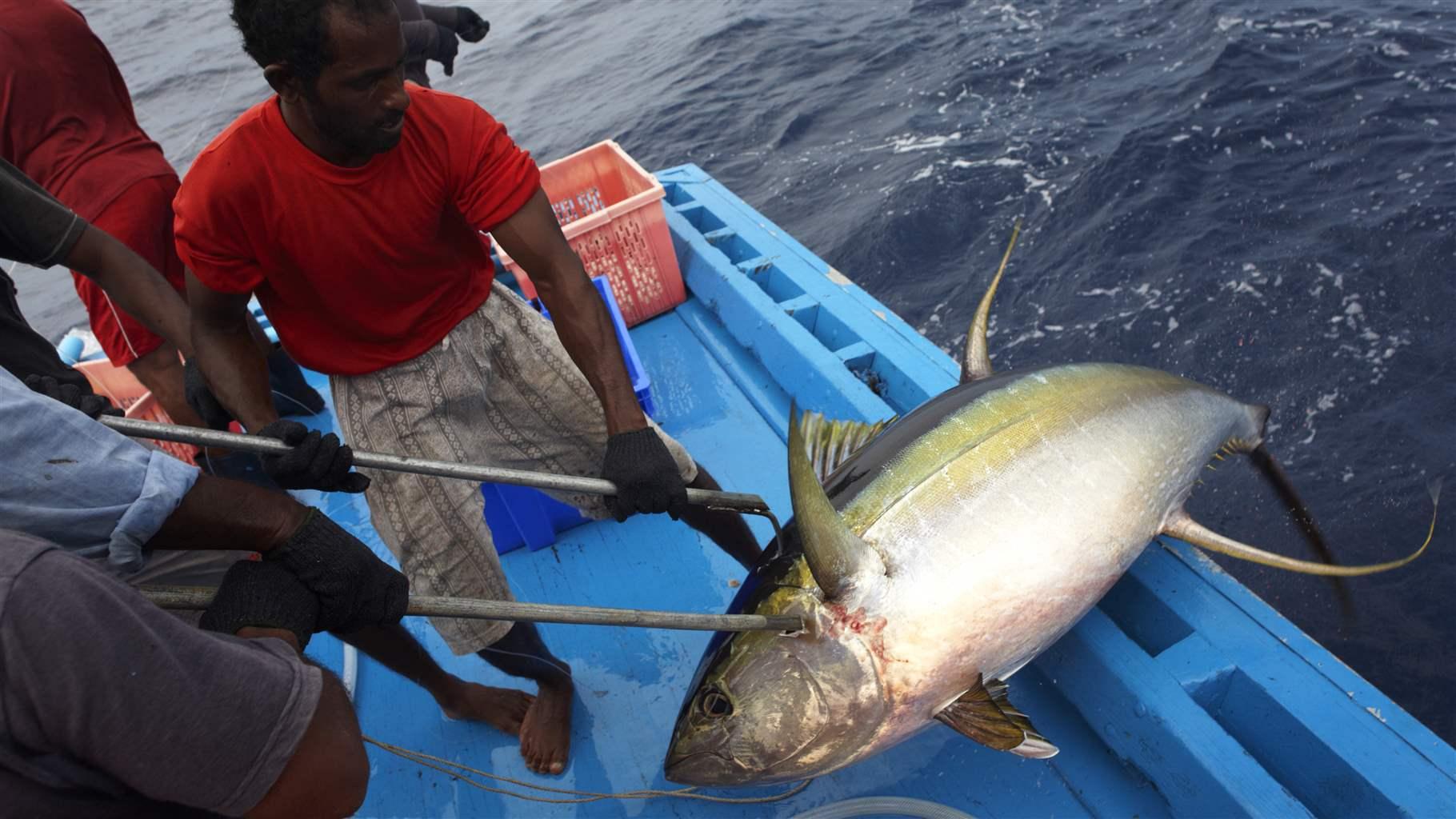To Save Indian Ocean Yellowfin Tuna From Overfishing, Managers Must Act Now
Market pressure and an Australian proposal could shift policy at upcoming IOTC meeting

According to new data from the Indian Ocean Tuna Commission (IOTC), overfishing of yellowfin tuna in that region continues, despite the fact that the species has been classified as overfished since 2015, and has been the subject of a rebuilding plan since 2016. Although last year’s catch of yellowfin was down from 2018, it was still more than 100,000 metric tons, or approximately 25% higher than what scientists say is needed to have even a 50% chance of rebuilding the population by 2027.
These sobering numbers show that the IOTC, at this year’s Nov. 2-6 virtual annual meeting, must adopt a more robust plan to rebuild yellowfin and strengthen management.
IOTC’s yellowfin management is complicated because more than 30 members are involved in the fishery and half of the overall catch comes from smaller scale artisanal fishing—a subsector with distinct management priorities. And some developing coastal State members want higher catch limits to help grow their fishing industries.
Further, industrial vessels, such as purse seiners, which use fish aggregating devices (FADs) to attract huge schools of fish. This increases the pressure not only on yellowfin, but on skipjack and bigeye tunas, which are also drawn to FADs and caught in high numbers. Unfortunately, IOTC has few compliance measures in place to stop overharvesting of yellowfin, so to date, it has had little success at ending overfishing.
There is the potential for change, however. Some of the world’s biggest seafood retailers, concerned about the mismanagement of the Indian Ocean yellowfin population, are cutting the amount they buy in a direct bid to pressure IOTC to act. The Global Tuna Alliance, a network of retailers and supply chain companies, is urging a 25% reduction in catch (compared to 2017 levels), and several EU and UK-based retailers and brands, including Tesco, Co-op, Princes, and the Colruyt Group, are boycotting Indian Ocean yellowfin until an improved recovery plan is in place.
In 2018, the end value of Indian Ocean yellowfin was more than US$4 billion, making it one of the world’s most valuable fisheries, and the dock value—or the amount paid to fishers—was more than US$1.5 billion. With this market pressure on the commission and its member States, a real recovery plan may be on the horizon.
Fortunately, science offers a clear path forward for sensible yellowfin management: adoption—and enforcement—of a precautionary, science-based management procedure, also known as a harvest strategy. This is a pre-agreed decision-making framework that shifts management away from short-term, annual negotiations to a long-term plan based on set objectives; in the case of Indian Ocean yellowfin, the highest priority objective should be to rebuild the population. Having a strong procedure in place would increase the efficiency and effectiveness of management, and enable IOTC to guide the stock through rebuilding and then maintain a sustainable, profitable, and stable fishery.
Australia has led a proposed yellowfin management procedure for discussion at this year’s annual meeting, with the aim of adoption in 2021. If agreed to, it will be a landmark moment for IOTC and yellowfin and will help start recovery for this important species. It is critical that IOTC move forward with this management procedure and begin the difficult work of rebuilding yellowfin tuna in earnest. It is not only necessary for the health of the species and the ocean, but also to secure the value of this billion-dollar industry and the well-being of those who depend on a healthy fishery for income and job security.
Glen Holmes works on The Pew Charitable Trusts’ international fisheries project.












